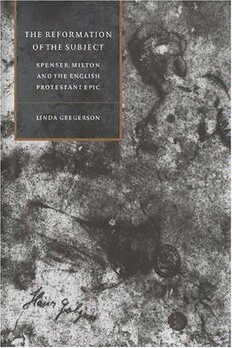
The Reformation of the Subject: Spenser, Milton, and the English Protestant Epic PDF
293 Pages·1995·6.03 MB·English
Most books are stored in the elastic cloud where traffic is expensive. For this reason, we have a limit on daily download.
Preview The Reformation of the Subject: Spenser, Milton, and the English Protestant Epic
Description:
Reformation iconoclasts viewed verbal images with the same distrust and aversion as visual images, because they too were capable of shaping and thus waylaying the human imagination; and yet the Reformation also produced the defining monuments of English epic. In an extended analysis, both lucid and theoretically sophisticated, Linda Gregerson traces the contradictory cultural roots of The Faerie Queene and Paradise Lost, illuminating the ideological, political, and gender conflicts that Spenser and Milton confronted as they transformed the epic poem into an instrument for the reformation of the political subject.
See more
The list of books you might like
Most books are stored in the elastic cloud where traffic is expensive. For this reason, we have a limit on daily download.
